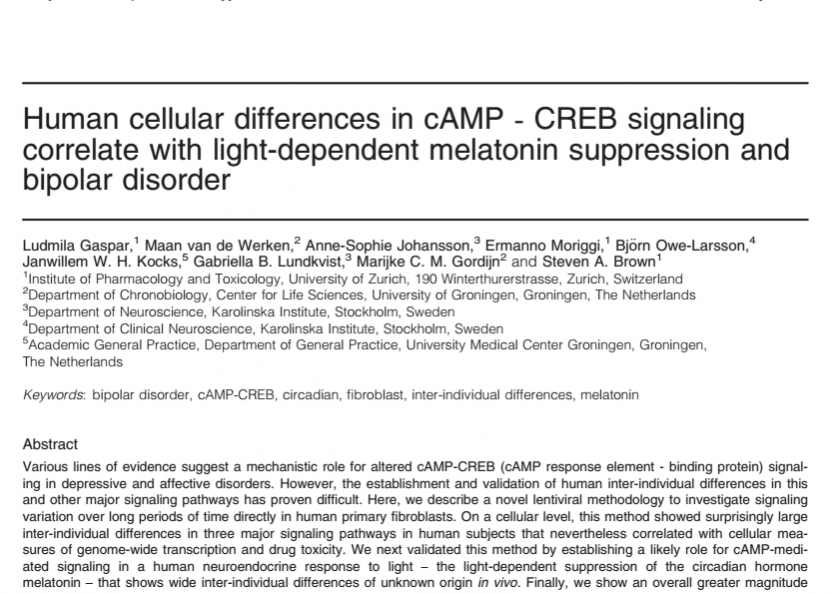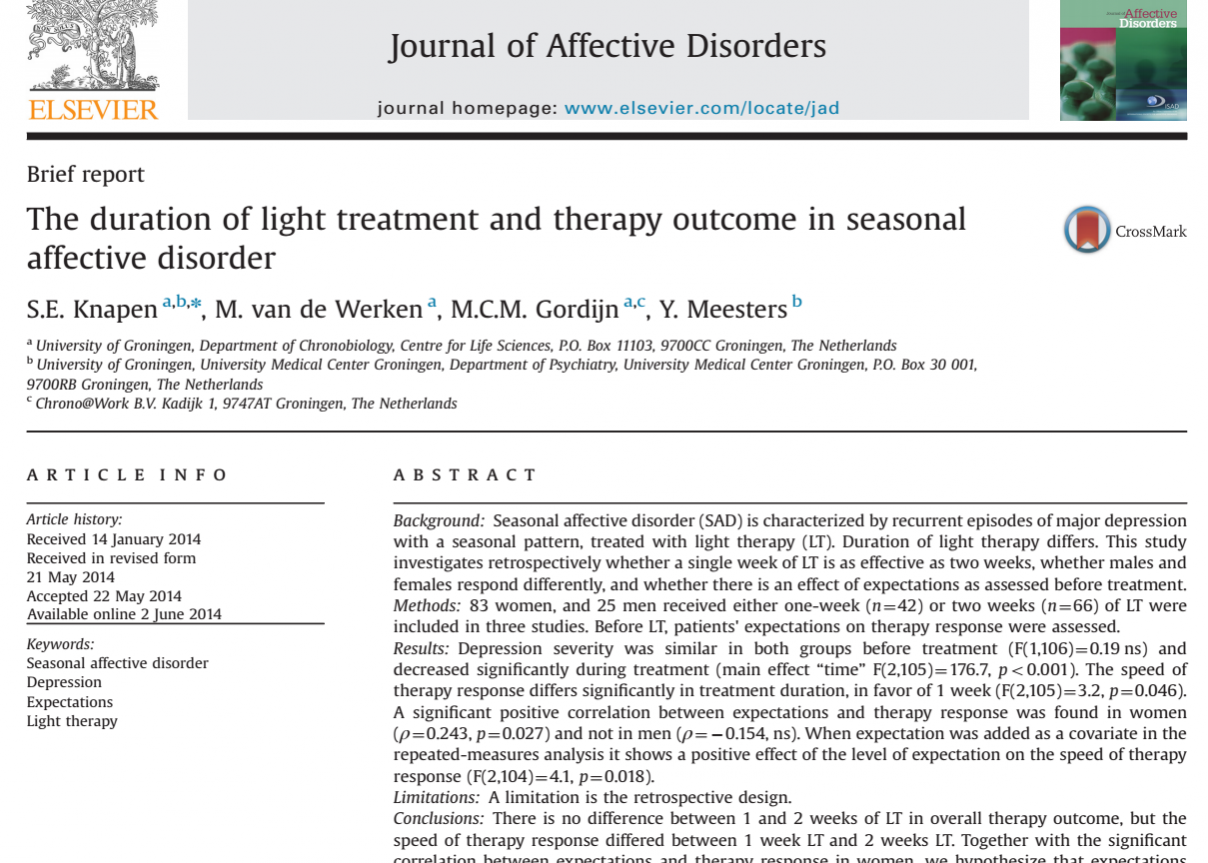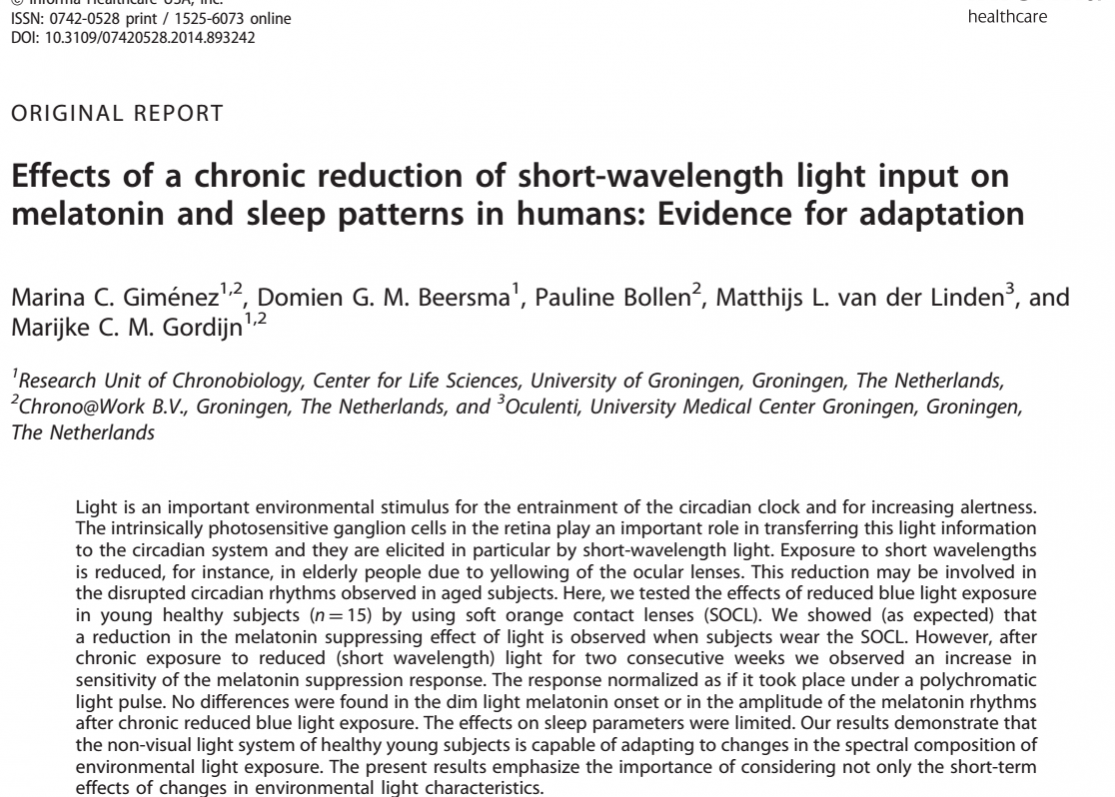Human cellular differences in cAMP – CREB signaling correlate with light-dependent melatonin suppression and bipolar disorder
Various lines of evidence suggest a mechanistic role for altered cAMP-CREB (cAMP response element – binding protein) signaling in depressive and affective disorders. However, the establishment and validation of human inter-individual differences in this and other major signaling pathways has proven difficult. Here, we describe a novel lentiviral methodology to investigate signaling variation over long periods of…




